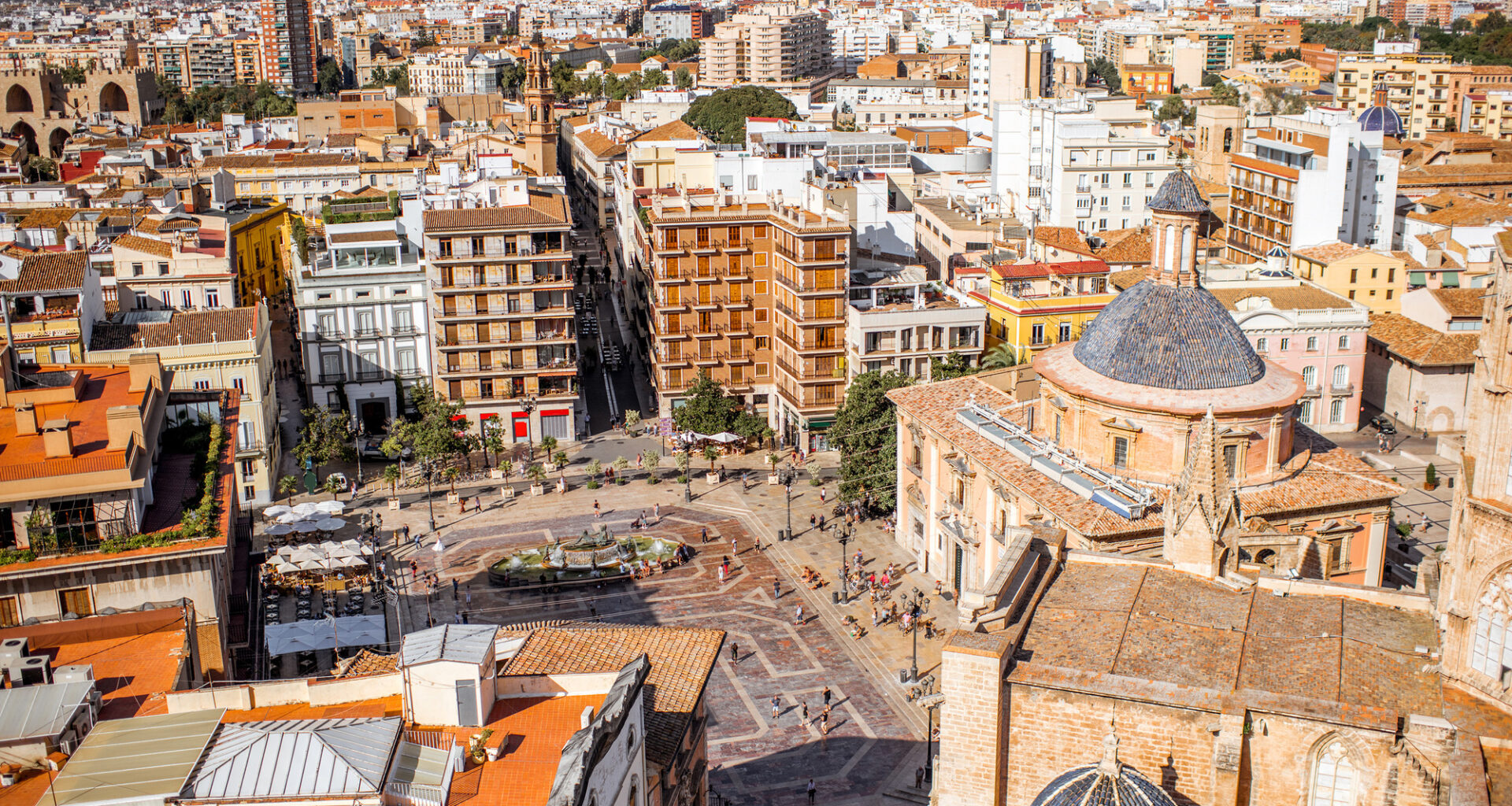 Old town of Valencia. Image © RossHelen via Shutterstock
Old town of Valencia. Image © RossHelen via Shutterstock
Share
Share
Or
https://www.archdaily.com/1031776/cooling-the-city-how-european-cities-are-adapting-to-extreme-heat
The summer of 2025 has brought extreme heat across Europe and beyond, with record-breaking temperatures and widespread climate-related impacts. Red alert warnings have been issued in France, Italy, and Spain as temperatures exceeded 46°C in parts of the Iberian Peninsula. These conditions have led to school closures, restrictions on outdoor work, and pressure on urban infrastructure, including power grids and public transport systems. The heatwave has simultaneously intensified wildfire risk across the Mediterranean. In western Turkey, ferocious wildfires near Izmir forced the evacuation of over 50,000 people as high winds and low humidity fueled rapidly spreading flames. In Spain‘s Catalonia region, two people died in a wildfire that raced across farmland and old structures in Torrefeta on July 1. Similar disasters have occurred in Greece, France, and Italy, with evacuations throughout southern Europe as widespread heat‑induced drought exacerbates fire season intensity.
 Holli, School Strike 4 Climate protest rally in Australia. Image Courtesy of Shutterstock
Holli, School Strike 4 Climate protest rally in Australia. Image Courtesy of Shutterstock
As climate change accelerates, cities around the world are facing increasingly frequent and severe heat waves. What was once rare has become frequent, with meteorologists warning that Europe should expect longer and more intense heatwaves in the years ahead. “It’s no longer a question of if we will have a heatwave, but how many are we going to experience this year and how long will they last,” said Marisol Yglesias Gonzalez, technical officer for climate change and health at the World Health Organization (WHO) in Bonn. While the WHO continues to advise staying hydrated, avoiding outdoor activity during peak hours, and keeping indoor spaces cool, addressing extreme heat requires more than short-term measures. It calls for long-term strategies, rethinking urban design, infrastructure, and public spaces to mitigate heat exposure and build resilience.
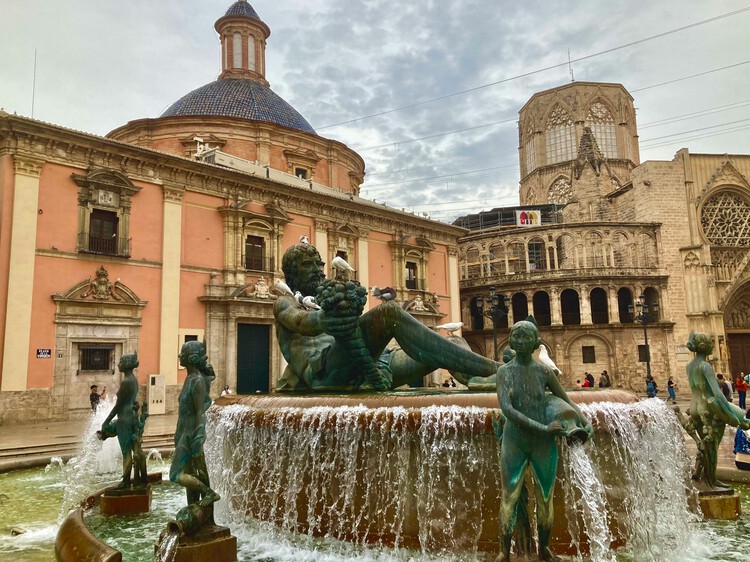 Turia Fountain in Valencia, Spain. Image © E Vos via Unsplash CC Licence
Turia Fountain in Valencia, Spain. Image © E Vos via Unsplash CC Licence
Read on to discover the strategies urban centers are implementing to face rising temperatures.
Related Article How are Cities Adapting to Heatwaves in the Face of Climate Change Antwerp‘s Cool Spots, Belgium 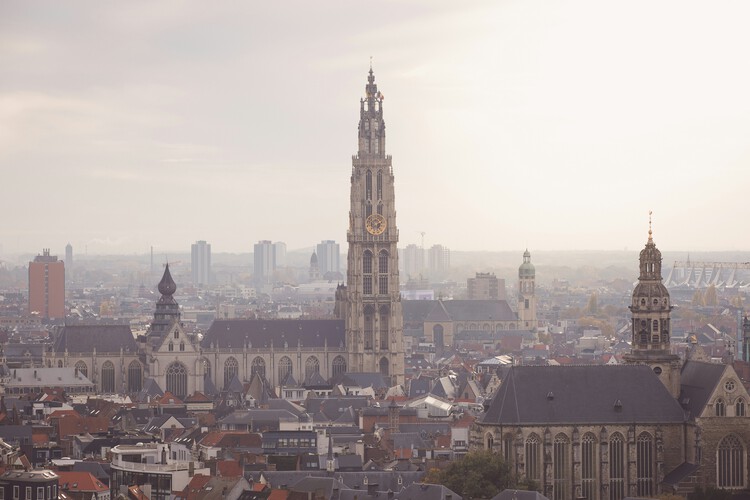 Antwerp, Belgium. Image © Zoë Gayah Jonker via Unsplash CC Licence
Antwerp, Belgium. Image © Zoë Gayah Jonker via Unsplash CC Licence
In response to increasing urban heat stress, Antwerp has developed a dual strategy that pairs long-term greening with the creation of Cool Spots, small, shaded spaces that offer immediate relief during heatwaves. Guided by heat mapping and scientific indicators such as the Wet Bulb Globe Temperature, the city identifies priority areas and integrates cooling infrastructure into public space design. Each Cool Spot spans at least 200 m², features over 80% canopy cover, and combines trees, unpaved surfaces, seating, and access to drinking water. These spaces are designed to be within easy walking distance for residents, particularly vulnerable groups such as children and the elderly. Examples include redesigned squares like Den Bell and gardens like EcoHuis, where paved areas have been replaced with vegetation, water elements, and shade.
Beyond these targeted spaces, Antwerp’s wider greening efforts include the Future Trees program, planting monumental trees with advanced root infrastructure, Garden Streets co-designed with residents, and incentives for private greening such as schoolyard projects and depaving initiatives. The city’s collaborative model, combining municipal departments, residents, research institutions, and EU support, ensures that cooling measures are equitable, data-driven, and integrated into broader urban planning. Antwerp’s Cool Spots also offer a scalable model for cities looking to balance immediate heat adaptation with long-term climate resilience.
Valencia‘s Climate Shelters Network, Spain 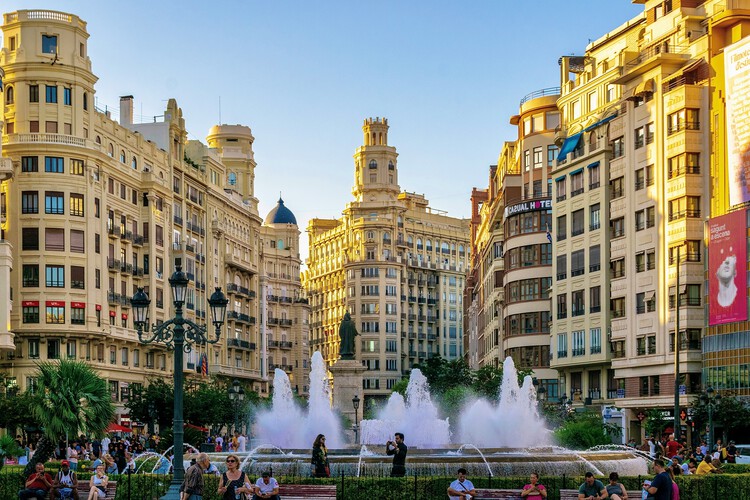 Valencia, Spain. Image © Zoë Gayah Jonker via Unsplash CC Licence
Valencia, Spain. Image © Zoë Gayah Jonker via Unsplash CC Licence
Facing increasingly severe heatwaves, Valencia has developed a network of climate shelters, publicly accessible spaces offering thermal comfort, drinking water, and essential amenities during extreme heat. Launched in 2022, the initiative transforms libraries, social centers, and other public buildings into safe, cool environments designed to support vulnerable populations.
The city mapped over 1,100 potential sites, activating the first 10 shelters in 2024, with plans to expand to 20 shelters by 2025. Each location meets standards for comfort and accessibility, including air conditioning or natural ventilation. Shifting from a reactive model tied to national heat alerts, Valencia proactively keeps shelters open throughout the summer to protect public health. The initiative is supported by community programs like Coolturate, which trains local leaders, NGOs, and municipal staff on low-tech cooling and energy poverty solutions.
Toulouse‘s “Toulouse + fraîche”, France 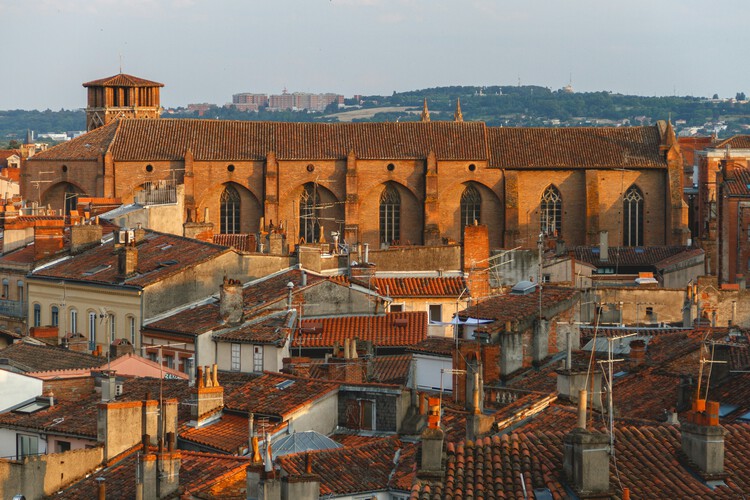 View from Galeries Lafayette rooftop, Toulouse, France. Image © Henrique Ferreira via Unsplash CC Licence
View from Galeries Lafayette rooftop, Toulouse, France. Image © Henrique Ferreira via Unsplash CC Licence
Confronting rising temperatures and a growing urban heat island effect, Toulouse launched its comprehensive Toulouse + fraîche plan in 2023. The strategy combines 30 experimental measures designed to provide immediate relief while laying the groundwork for long-term transformation. The plan integrates shading structures, extensive tree planting, and public space redesigns. Shading prototypes, from canvas pergolas to Andalusian-inspired shade sails and inflatable mobile shades, are being tested across public squares and streets to identify the most effective solutions for wider deployment. At the same time, the city has prioritized urban greening, aiming to plant more than 100,000 trees by 2030, with a focus on nurseries, schools, and care facilities to protect vulnerable groups. Complementary measures include adjusting municipal operations, extending swimming pool and park hours, adapting staff schedules during heatwaves, and promoting public transport through discounted fares on hot days.
Swimmable Cities Alliance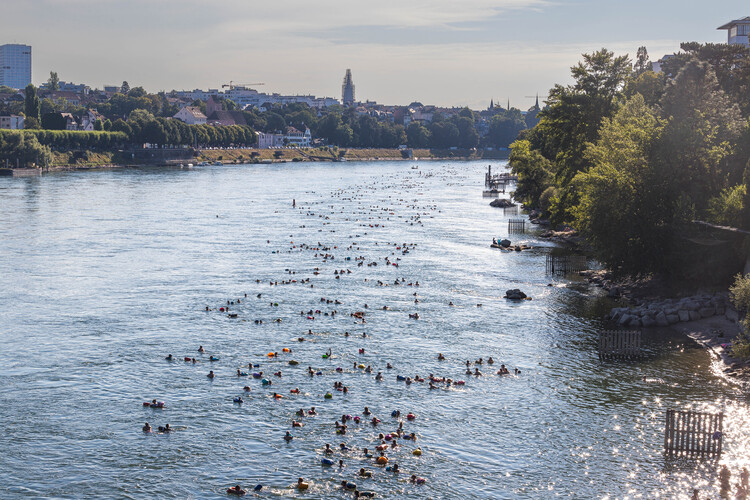 Swimming in the Rhine, by Tanja Ecker. Image Courtesy of wickelfisch.ch
Swimming in the Rhine, by Tanja Ecker. Image Courtesy of wickelfisch.ch
Launched ahead of the 2024 Paris Olympics, the Swimmable Cities Alliance is building a global movement to reclaim urban waterways as clean, accessible, and swimmable spaces. With over 100 signatory organizations across 59 cities and 22 countries, the alliance promotes the Right to Swim as a symbol of urban health, environmental restoration, and social equity. They present an adaptive strategy that helps cities cool down, provide relief, and enhance quality of life during hotter, longer summers. Restoring rivers, canals, and harbors to bathing water standards creates new, climate-resilient civic spaces where residents can find refuge from urban heat islands.
The alliance’s Swimmable Cities Charter sets out ten principles that frame swimmability as both a climate adaptation and social regeneration tool, emphasizing universal access, ecological stewardship, and the integration of swimming into urban design. By reconnecting people with water through inclusive policies, infrastructure, and cultural practices, Swimmable Cities aims to reimagine waterways not just as environmental assets, but as active, shared spaces for cooling, wellbeing, and resilience in an era of rising temperatures.
Getafe Rehabilita, Spain 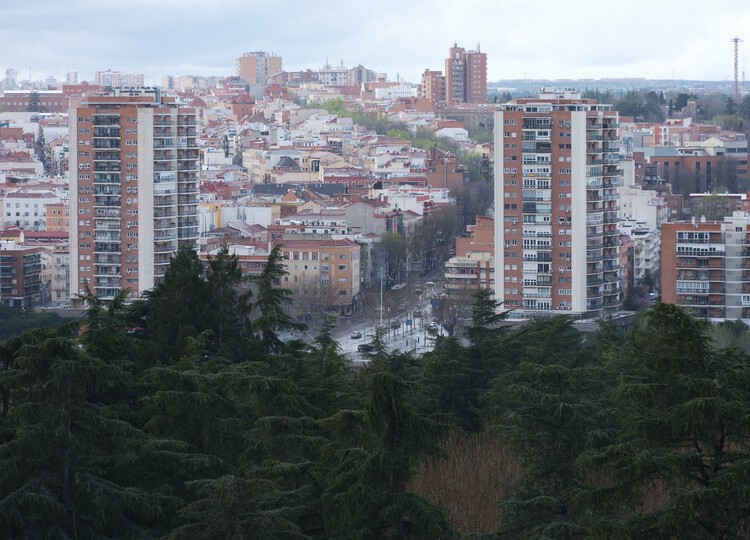 Suburban Madrid, Spain. Image © Dmitrii E. via Unsplash CC Licence
Suburban Madrid, Spain. Image © Dmitrii E. via Unsplash CC Licence
In the Madrid metropolitan area, Getafe faces intense summer heat, with temperatures reaching up to 40°C and a building stock often lacking proper insulation or cooling, making vulnerable populations especially at risk. In response, the city has launched the Getafe Rehabilita within the UIA EPIU Healthy Homes project, an innovative urban intervention addressing both energy poverty and extreme heat. Getafe Rehabilita is a municipal strategy that scales up lessons from the EPIU project through an action catalogue focused on building renovations and urban-scale cooling.
Measures include façade insulation, passive cooling techniques, and the integration of green infrastructure, all aimed at reducing heat accumulation and enhancing indoor and outdoor thermal comfort. Pilot neighbourhoods like Margaritas and La Alhóndiga serve as climate shelter zones where targeted interventions are tested before wider application. The strategy relies on extensive cross-sector collaboration involving local government departments, architecture and urban planning experts, universities, community groups, and NGOs.
Guimarães‘ Green Radial Strategy, Portugal 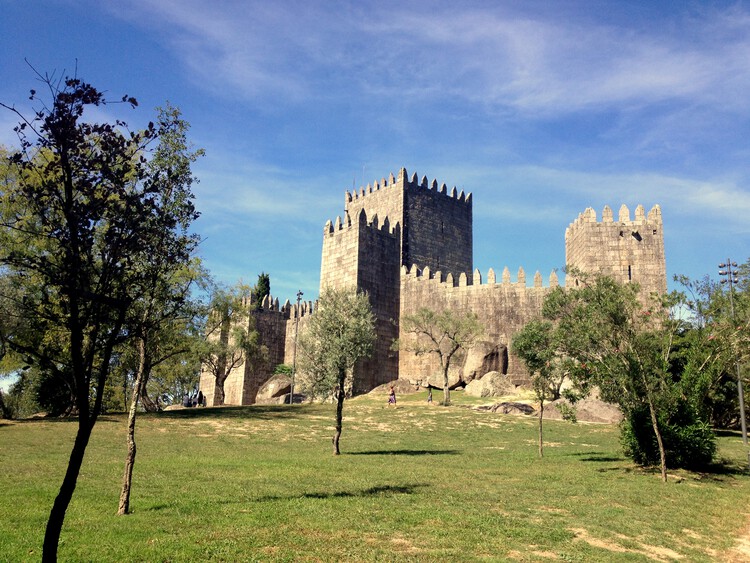 Castelo Guimaraes, Portugal. Image © Xavier Sanz via Flickr licence CC BY-ND 2.0
Castelo Guimaraes, Portugal. Image © Xavier Sanz via Flickr licence CC BY-ND 2.0
Guimarães, a UNESCO World Heritage Site, in Portugal is demonstrating how historic urban centers can adapt while preserving their cultural fabric. Through its Green Radial Strategy, the city is implementing nature-based solutions that connect green and blue infrastructure to provide natural cooling, enhance biodiversity, and improve urban resilience. This approach mirrors strategies adopted in cities globally, such as Medellín’s Green Corridors, where 30 corridors have been established to expand tree cover, reduce temperatures, and improve air quality.
 Medellin Street. Image © C40Knowledge
Medellin Street. Image © C40Knowledge
The strategy is part of Guimarães’ broader Sustainable Energy and Climate Adaptation Plan (C-CAP), which sets targets for climate neutrality by 2030. The Green Radial Strategy focuses on restoring river corridors and natural habitats, creating urban forests and community green spaces that serve as climate refuges, and introducing nature-based measures such as rain-fed meadows and retention basins to manage both heat stress and urban flooding. These interventions help mitigate the urban heat island effect while supporting biodiversity and water management.
